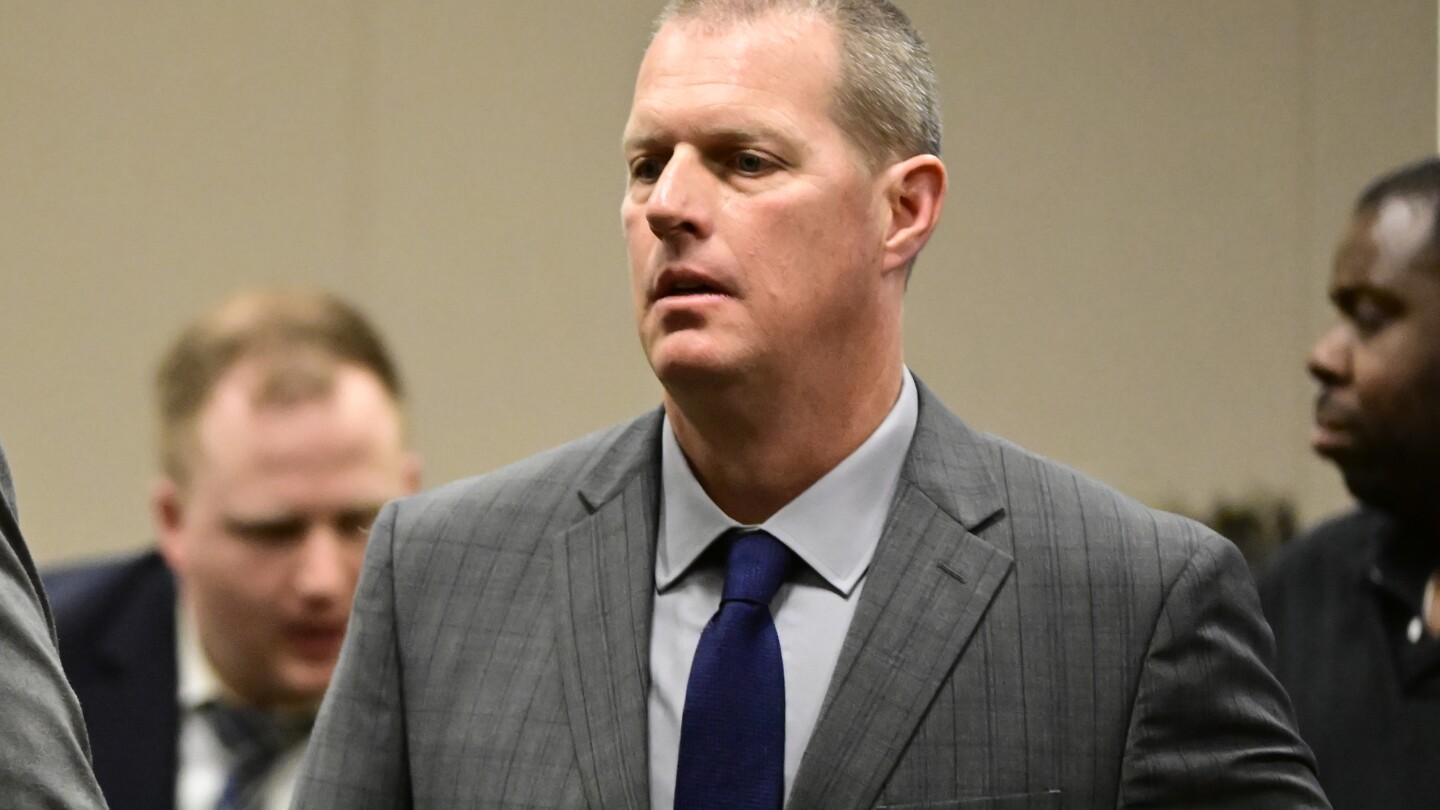DENVER (AP) — Medical responders across the U.S. are rethinking how they treat people in police custody after a jury last December handed down a rare decision: It convicted two Colorado paramedics for their roles in the 2019 death of Elijah McClain following an overdose of a powerful sedative.
As one of the paramedics faces sentencing Friday at a hearing in which McClain’s mother could speak about her son’s death, the case has sent shock waves through the ranks of paramedics across the U.S. and thrust their profession into the acrimonious fight over social justice sparked by the 2020 murder of George Floyd by Minneapolis police.
McClain, a 23-year-old Black massage therapist, was forcibly detained by police in the Denver suburb of Aurora while walking home from a convenience store. After officers claimed McClain was resisting, the paramedics injected him with the sedative ketamine. He went into cardiac arrest on the way to the hospital and died three days later.
The conviction of the paramedics and one of the police officers brought a small measure of justice to the victim’s family. Yet the case has also highlighted gaps in medical procedures that experts said must be addressed so more deaths can be prevented.
“We failed to realize just how dangerous the restraint and chemical sedation of these individuals can be,” said Eric Jaeger, a paramedic and EMS educator in New Hampshire. “For better or worse the criminal convictions are focusing attention on the problem.”
The response includes revisions to patient protocols aimed at elevating how seriously ketamine injections are treated — or avoiding them altogether when alternative drugs are more appropriate.
Some departments now require comprehensive patient assessments before and after ketamine injections. They’ve also cautioned against using ketamine on people being restrained by police in a prone position — which increases the chances for fatal complications by making it harder for patients to breathe — and stocked medicine kits with alternative sedatives. And they’ve reminded their paramedics not to defer to police when making medical decisions.
In the McClain case, “a lot of these basics were not done,” said Peter Antevy, medical director for several Florida fire departments.
“Everyone kind of assumed people just do them. But more and more you’re seeing with the advent of body cameras that people aren’t doing these things,” he said. “We need to put the basics in black and white.”
The changes have come relatively swiftly within a profession in which it can take up to a decade for the latest medical research to filter down to paramedics on the front lines, Jaeger said. Nevertheless, since McClain’s death, Jaeger has documented five similar cases involving patients dying after receiving ketamine, most recently a 29-year-old man in Baltimore last summer.
In Aurora, the paramedics’ indictment is blamed by union officials for prompting some medical responders to scale back their duties.
The day after the verdicts, Aurora’s fire chief temporarily suspended a requirement that firefighters also serve as paramedics, fearing the convictions would lead to a mass exodus of personnel.
So far about 10% of the department’s certified paramedics have taken a pay cut and are no longer working as paramedics, reverting to the role of emergency medical technicians, or EMTs, who cannot provide advanced life-saving measures.
Fire Chief Alec Oughton said enough paramedics remain for every ladder truck and engine to have an assigned paramedic.
But the president of the International Association of Fire Fighters union said the convictions put lives at risk in the city because EMTs aren’t qualified to provide life-saving drugs, such as for patients suffering heart attacks.
“The legacy of Attorney General Phil Weiser is there is going to be less paramedics to respond to people who need help,” said union president Edward Kelly, referring to the state attorney general tasked by Colorado’s Democratic governor with reinvestigating McClain’s death in 2020 following protests over the killing of George Floyd.
No one was initially charged in McClain’s death, mostly because the first autopsy report could not conclude why he died. The autopsy was updated in 2021 — after Weiser convened a grand jury to examine the case — and it found McClain died because he was given ketamine after being restrained by police.
Kelly said ketamine did not kill McClain, noting the autopsy report’s finding that the amount of the drug found in his system was at the low end of what is normally considered safe.
A 2021 study co-authored by Antevy examined 11,000 instances of patients receiving ketamine over a yearlong period. The drug was a possible contributor to just two deaths outside a hospital setting, the researchers concluded.
“Ketamine when used safely and correctly is a life-saving medication,” Antevy said.
Paramedic Peter Cichuniec — the senior medical responder on the scene during the altercation with McClain — faces a mandatory yearslong prison sentence during Friday’s hearing before a state judge.
A jury in December found him guilty of criminally negligent homicide and felony second-degree assault — the most serious verdict handed down against any of the first responders indicted in the case. The assault conviction carries a sentence of between five and 16 years in prison.
Police had stopped McClain following a suspicious person complaint. After an officer said McClain reached for an officer’s gun — a claim disputed by prosecutors — another officer put him in a neck hold that rendered him temporarily unconscious. Officers also pinned down McClain before paramedic Jeremy Cooper injected him with ketamine. Cichuniec said it was his decision to use the drug.
Prosecutors said the paramedics did not conduct basic medical checks, such as taking McClain’s pulse and monitoring his breathing before administering the ketamine. The dose was too much for someone of his size — 140 pounds (64 kilograms), experts testified.
Defense attorneys for the paramedics said they followed their training in giving ketamine after diagnosing McClain with “ excited delirium,” a disputed condition some say is unscientific and has been used to justify excessive force.

